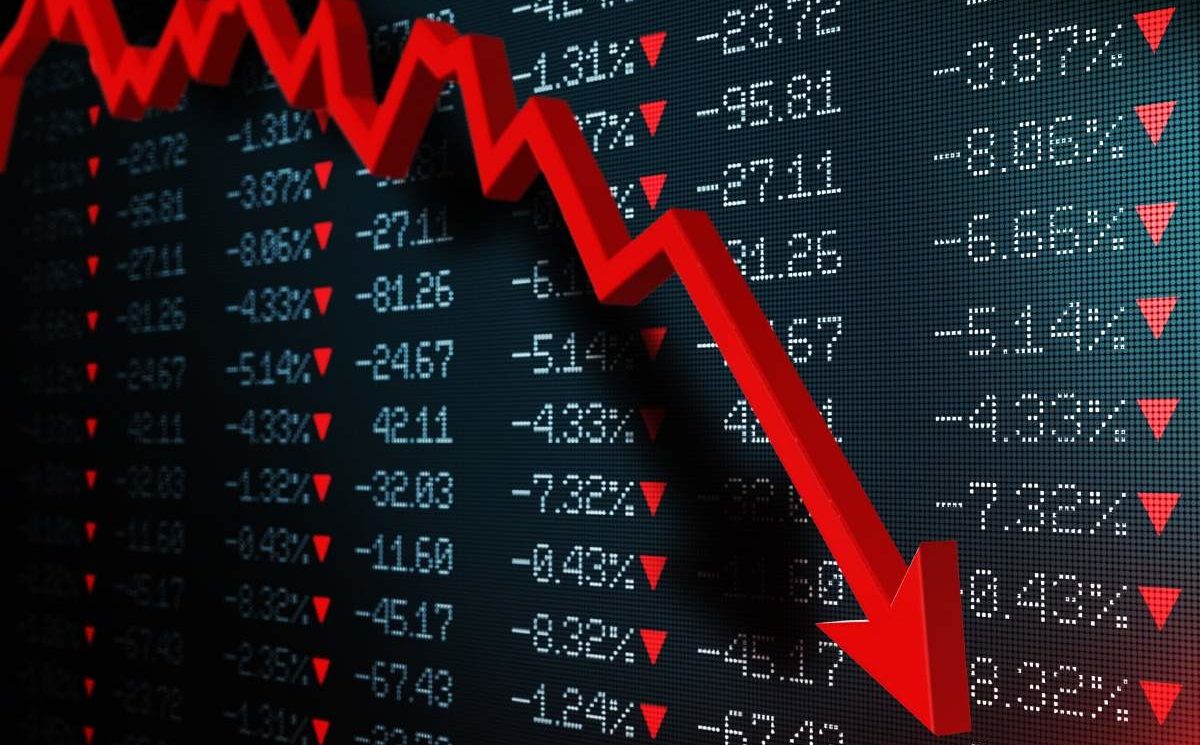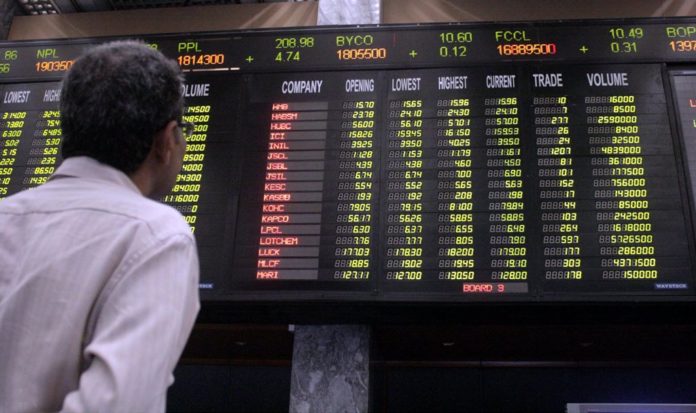PTBP Web Desk
The Pakistan Stock Exchange (PSX) faced significant selling pressure on Tuesday, with the benchmark KSE-100 Index losing over 2,500 points during intra-day trading. At 12:30 PM, the index was recorded at 113,738.40 points, reflecting a sharp decline of 2,516.72 points or 2.16%.
The market experienced selling pressure across major sectors, including:
- Automobile assemblers
- Chemical
- Commercial banks
- Fertilizer
- Oil and gas exploration companies
- Oil marketing companies (OMCs)
- Power generation
Index-heavy stocks such as NRL, ATRL, PSO, SSGC, MARI, OGDC, PPL, MCB, MEBL, and UBL traded in the red, intensifying the decline.
Market experts attributed the sharp drop to a combination of domestic and international factors. Domestically, concerns over the deteriorating law and order situation in Balochistan weighed heavily on investor sentiment. Additionally, the considerable increase in Pakistan State Oil’s (PSO) receivables further dampened market confidence, particularly in the oil and gas sector.
This comes a day after the PSX witnessed a volatile session on Monday, where the benchmark KSE-100 Index fluctuated due to bouts of buying and selling. The index eventually closed 1,332 points lower at 116,255.13, signaling a trend of bearish market activity.
In contrast to the turmoil at the PSX, Asian markets showed modest gains, driven by optimism from Wall Street’s positive performance. Investors speculated that the incoming U.S. administration, led by President-elect Donald Trump, might take a less aggressive stance on tariffs than previously promised.
Reports by The Washington Post on Monday suggested that Trump’s aides were exploring selective tariff plans targeting specific sectors critical to national or economic security. While this news initially spurred a rally in stocks and weakened the U.S. dollar, Trump’s denial of the claims on his Truth Social platform tempered these market reactions.
- MSCI’s Broadest Index of Asia-Pacific Shares (excluding Japan): Up by 0.16% during the early Asian session.
- Japan’s Nikkei: Rose by 2%, boosted by strong performance in technology stocks.
The positive performance in Asian markets stood in stark contrast to the bearish trend observed at the PSX, underscoring the divergent market dynamics influenced by regional and global factors.
On the international front, attention shifted to the U.S. Federal Reserve. Investors awaited the release of minutes from the Fed’s latest meeting, which are expected to provide insights into the central bank’s future monetary policy, including its dot plot predictions.
The anticipation of a less aggressive easing cycle by the Fed kept U.S. Treasury yields steady. The benchmark 10-year yield stood at 4.6219%, following a recent rise to its highest level since May during the previous session.
The PSX’s recent downturn highlights the fragility of investor confidence in the face of both domestic challenges and global uncertainties. Market experts have urged the government to address key concerns, including law and order issues and the financial health of major institutions like PSO, to restore stability and encourage investor participation.
While global markets remain optimistic about potential policy shifts in the U.S., the PSX requires immediate measures to stabilize local market conditions. Enhanced governance, clear communication with stakeholders, and targeted interventions in critical sectors could help restore confidence and prevent further declines.
Investors are advised to remain cautious and closely monitor developments, particularly those related to the domestic security situation and global economic trends.




